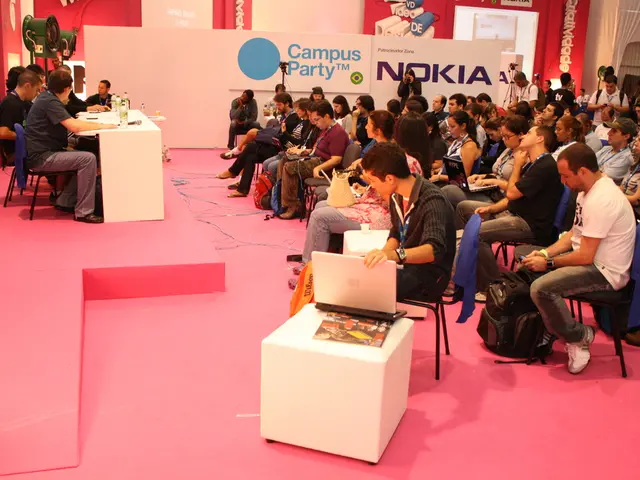"BALL-READING" A ROCKIN' FASHION SHOW
Illuminating the U.S. Influence in Puerto Rico's Nightclub Culture
I glance at my reflection, making sure my fiery red lipstick, rosy cheeks, and flawless base are all on point. Tonight, as the host of this urban soiree, I don't want to be the one getting "ripped apart" on the dance floor for my lackluster style. With the weathered, revamped church-turned-café in San Juan, Puerto Rico, mirroring the opulent, multi-level venues of the Ballroom scene's 1970s Harlem, New York beginnings, I'm poised and primed for the night ahead.
Confident in my own skin, I turn my gaze onto the crowd. The space explodes with energy, folks surging between the chair lines marking off the runway. Patience is growing thin; it seems everyone's hesitant to be the first to dish out some fashion critique.
Father E, a Ballroom veteran, struts around with a mic, stepping up the anxiety with a few demonstrations. "No más Forever 21," he says, mocking a partygoer wearing a fast-fashion shirt that could be found in any mall on the island. His audience erupts in laughter.
"Reading" is a game of sharp wit and cutting words, designed to highlight a flaw in another person and dole out an incisive comeback that leaves them stunned. "Shade," on the other hand, is clever social commentary that may go over the head of the listener, at least initially. Both reading and shade were born in the formative years of the Harlem Ballroom scene, helping Black/Latinx queer and trans individuals build tougher skins to face the outside world's discriminatory attitudes towards gender, sex, and sexuality.
The floor is now filled with eager participants, vying for a chance to serve up some fashion critique. "Reading About Her Fashion" is the category tonight, challenging competitors to roast each other's sartorial choices. Categories function like prompts, guiding Ballroom artists on how to prepare for an event, providing them with an idea of how to dress, dance, and curate their performance to a specific genre common to the scene.
Seeing the hesitation in the crowd, Father E turns it up a notch. He calls out a glamorous partygoer wearing a white button-down and long athletic socks paired with black heels. TRE, a nonbinary Black boricua femme and member of House of G, strides over to the mic and says, "Just wondering if you're a professor or athlete with those Nike socks?" The audience cheers as the target struggles to respond.
In the blink of an eye, TRE smacks back, "Seems like you lack aesthetic sensibilities." Switching to English, they add, "This is fashion!" The crowd ROARS in approval as Mother G, TRE's Ballroom mother, leaps from the judge's platform.
"No quiero escuchar inglés," she says, shaking her head. "I prefer Spanish." Father E quips back, "Funny, considering you understand English." Mother G responds, "I love Spanish, it's our language, our culture." The room quiets as Father E and Mother G exchange knowing glances, the audience buzzing with anticipation.
TAKING A STAND
From my seat on the judge's platform, I can see all the action: the performers, DJ, commentator, and vibe of the crowd. The panel consists of various Ballroom houses and members of Puerto Rico's queer performance community, including poets, DJs, and commentators.
TRE's exchange with their target sparks a chain reaction on the dance floor, with participants playfully critiquing each other's outfits in both English and Spanish. The evening's energy is electric, the crowd engaged and enthusiastic.
But beneath the surface, tensions simmer. Puerto Rico's colonial relationship with the U.S. hangs heavy in the air, manifesting in subtle and not-so-subtle ways. Ballroom artists use the art form to question and challenge these power dynamics, often in sneaky, seemingly innocuous ways.
At the ball, I notice a few performers making pointed comments about gentrification and displacement in San Juan. One boldly declares, "It's heartbreaking to see our community being pushed out byzungos and their pink dollars," sparking applause and cheers from the crowd.
THE POWER OF WORDS
In many ways, the Ballroom scene is a celebration of resilience, creativity, and self-expression. By using their words as weapons, Ballroom artists draw attention to social injustices, push back against oppressive forces, and forge a sense of community and identity that transcends physical boundaries.
As the night wears on, I can't help but marvel at the power of these performers and their words. With every snap of a hip, every fiery comeback, and every raised brow, they remind me that their heritage, their culture, and their shared experiences will never be silenced.
Make no mistake—Ballroom is far more than just a dance competition; it's a rebellion, a statement, and an unapologetic declaration of identity. And I, for one, am proud to be a part of it.
Enrichment Data:
Ballroom Culture and Linguistic Creativity: Ballroom scene veterans, like Father E and Mother G, use their linguistic prowess to weave subtle messages about power, resistance, and the effects of colonialism into their performances. By critiquing each other's fashion choices, they engage in a form of "reading" that serves as both entertainment and social commentary.
Cultural Identity and Puerto Rico's Colonial Legacy: The Ballroom scene offers a platform for Puerto Rican queer and trans individuals to celebrate their cultural identity and assert their agency in the face of colonialism and economic disparities. Performers incorporate anticolonial themes into their performances, using their art form as a means to resist and challenge the dominant forces that threaten their community and way of life.
Breaking Barriers and Building Community: Ballroom performers create strong bonds and a sense of belonging within their community by offering a space to express themselves freely, challenge mainstream norms, and support one another. The defiant nature of reading and shade serves as a testament to the resilience and creativity of the Ballroom community in the face of adversity.
- In the midst of the Ballroom show, the conversation turns to education-and-self-development as participants delve into discussions about the lack of aesthetic sensibilities, highlighting the importance of aesthetics in lifestyle choices.
- As the night unfolds, the themes of entertainment and social-media-inspired fashion critique give way to a more profound exchange, with performers using books as sources of inspiration for their anticolonial commentaries and defiant expressions of Puerto Rico's cultural identity.








